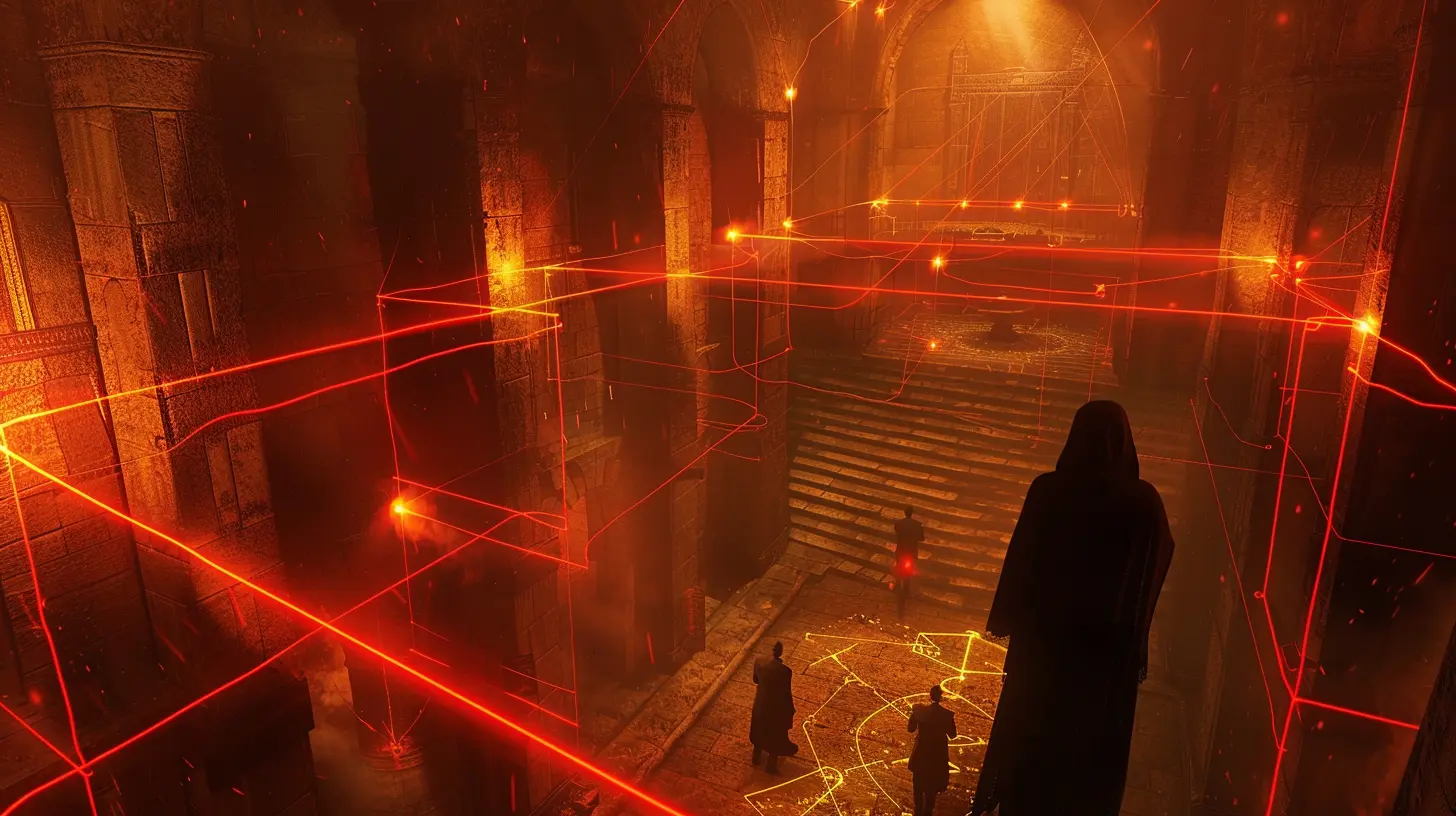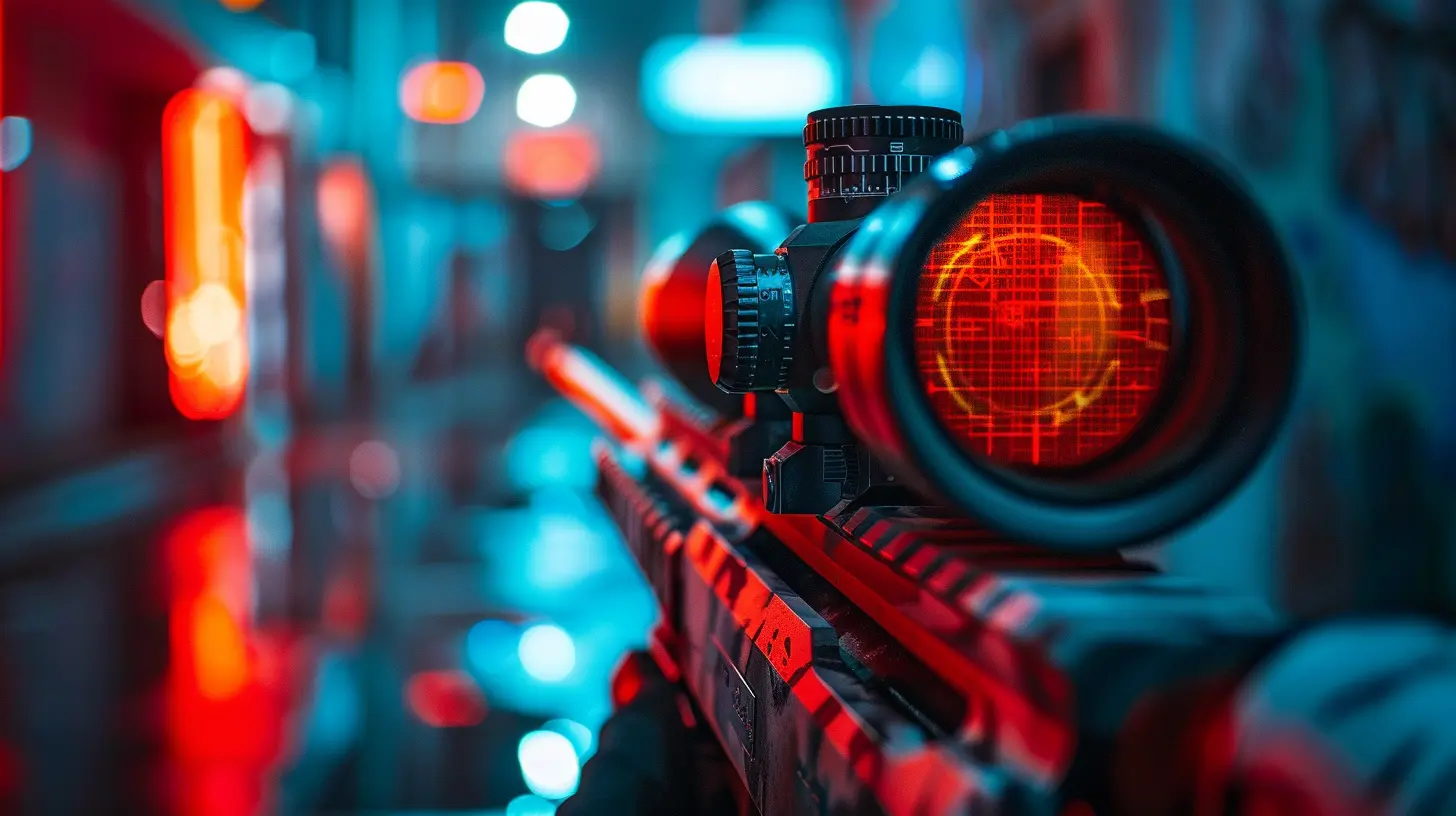Game Mechanics Behind Stealth: Light, Sound, and Suspicion Meters
11 November 2025
When you’re crouching behind a crate in a dimly lit corridor, heart pounding, hoping the guard doesn’t turn around – that’s stealth gaming at its finest. But have you ever wondered what’s really happening behind the scenes as you sneak through shadows and tiptoe past enemies?
Let’s break it down. In stealth games, success isn’t just about staying out of sight — it’s about manipulating light, managing sound, and keeping an eye on those sneaky suspicion meters. These mechanics work together to shape our stealthy gameplay moments, and they’re more complex than they first appear.
In this article, we’re diving deep into the game mechanics behind stealth. We’ll cover how light, sound, and suspicion systems affect your gameplay, and why they’re so effective at making your palms sweat and your heart race.
Why Stealth Works: The Thrill of Unseen Movement
Before we get into the nuts and bolts, let's talk about why stealth gaming even works. Stealth mechanics tap into something primal — the fear of being caught. It's like hide-and-seek for grown-ups, with higher stakes and cooler gadgets.And the best ones? They leave you feeling like a ghost — unseen, unheard, untouchable. But behind the feeling are systems built carefully by game developers. Let’s unravel them.
Light: The Shadow Is Your Best Friend
Ever notice how in stealth games you instinctively stick to the darker areas? That's because light plays a direct role in whether enemies can spot you. It’s not just about looking cool crouched in darkness — it’s a measurable element in many stealth game engines.How Light Detection Works
Most stealth games use a visibility system based on lighting zones. Think of it as a cone of vision combined with light intensity. The more light you're in, the easier it is for enemies to spot you.Games like Splinter Cell and Thief have literal visibility meters showing how exposed you are. Stand under a streetlamp? You're toast. Hide in the corner near broken bulbs? You're practically invisible.
Dynamic Lighting and Shadows
Things get real spicy when games include dynamic lighting. This means light sources can move or be manipulated. You can shoot out lights or use them to create distractions.For example, in Metal Gear Solid V, shooting a light near a guard can cause them to investigate — giving you a path to sneak by. But it’s a double-edged sword; create too much chaos, and you might lure the whole base to your location.
Lighting as Gameplay Strategy
Smart players use light the same way a chess player plans moves. Do you risk crossing that brightly lit hallway or wait for the guard to walk past? Do you create a blackout to improve your odds? Light isn’t just background ambience — it’s part of your strategy.
Sound: Silence Isn’t Just Golden — It’s Mandatory
If light tells enemies where to look, sound tells them where to go. In stealth games, managing how much noise you make is just as important as staying out of sight.Footsteps, Weapons, and Movement
Every movement you make can produce sound. Running on metal floors? Loud. Crouch-walking on carpet? Nearly silent. Many games simulate this with audio propagation systems — essentially virtual microphones that ‘hear’ noise and alert AI accordingly.In The Last of Us, for instance, sprinting too much draws attention, while walking slowly or crouching allows you to sneak up on infected or human enemies. The sound you make directly informs the AI’s behavior.
Sound Radius and AI Hearing
Games often give each noise a radius — a bubble that expands based on how loud the action is. If a guard is within that bubble, they’ll react. The bigger the noise, the further it travels, and the more likely you’ll get busted.Some games even let you use this to your advantage. Tossing a bottle in the distance to distract a guard pulls them away from their post. It’s like ringing the dinner bell and watching them come running.
Tools for Staying Quiet
Most stealth games arm you with tools to stay quiet — suppressed weapons, melee takedowns, or even gadgets that dampen sound. It’s all about staying one step ahead without making a peep.
Suspicion Meters: Gauging the Enemy’s Awareness
Suspicion meters are the invisible (or sometimes very visible) minds of your enemies. They tell you how close you are to being caught.What Are Suspicion Meters?
Let’s say you slip through a room, and a guard catches a glimpse of motion. You’re not fully caught yet, but their suspicion is piqued. This is where the suspicion meter comes into play.It usually fills gradually — the longer you're visible (or audible), the quicker it fills. If it maxes out, you’re detected. But if you vanish or hide in time, it drains back down, and the guard calms down.
It’s like the enemy AI saying, “Hmm… did I just see something?” vs. “I SEE YOU!”
Visual and Audio Feedback
Games like Dishonored and Hitman give clear visual cues about how suspicious enemies are. Maybe it's a dot above their head or a colored bar — yellow means curious, red means it’s time to run.Others use audio — guards muttering things like “What was that noise?” or “I thought I saw something,” giving you time to react.
Manipulating Suspicion
Here's where it becomes an art. You can use partial sightings or sounds to control AI behavior. Need a guard to move? Let him glimpse you, then disappear. He’ll go looking, giving you access to a formerly guarded area. It’s like fishing with curiosity as bait.The Holy Trinity: How Light, Sound, and Suspicion Work Together
None of these mechanics exist in a vacuum. The best stealth games combine them into complex ecosystems of tension and strategy.Let’s say you’re in a quiet, unlit room with two patrolling guards. You can:
- Stay in the shadows, unseen (light mechanic).
- Move slowly to avoid alerting them (sound mechanic).
- Monitor how close you are to being noticed (suspicion meter).
Screw any one of those up, and you’ll alert the guards, possibly triggering alarms, backup, or even a total mission restart.
Realistic AI Responses
What’s really cool is how recent games integrate these elements to create more realistic AI. Instead of robotic routines, enemies respond dynamically. Hear something? They’ll investigate. See movement? They’ll search the area. And if they get too suspicious, they’ll coordinate with others.In Alien: Isolation, for example, the Xenomorph adapts to your habits. Hide in the same kind of locker too often, and it starts checking them. It’s terrifying and brilliant — a masterclass in stealth design.
Why These Mechanics Matter
Light, sound, and suspicion aren’t just gimmicks—they make the stealth experience meaningful. They create tension organically. You’re not just pressing buttons — you’re reacting, planning, adapting. It's immersive, it's challenging, and yeah, when you finally sneak past elite guards without being seen, it’s insanely satisfying.Empowering Player Choice
Stealth mechanics give you options. Go loud or stay quiet? Knock out enemies or sneak past untouched? Disable lights or avoid them? These decisions shape your experience and make every playthrough unique.Encouraging Creative Problem-Solving
Think of each level like a puzzle — the guards, cameras, lights, and noises are the pieces. Stealth mechanics encourage players to think creatively, whether it’s stacking boxes to move across light patches or throwing objects to mislead enemies.Modern Stealth Innovations
As games evolve, so do stealth mechanics. Some modern titles go beyond meters and visibility to implement things like:- AI that “remembers” where you were last seen.
- Enemies that communicate and adapt patrol routes.
- Environmental sound simulation that mimics real acoustics.
Titles like Hitman 3, Splinter Cell: Blacklist, and Ghost of Tsushima push stealth systems further, making us feel like actual ninjas, assassins, and secret agents.
The Rise of Hybrid Stealth Systems
Some games now blend stealth with action. You might get discovered mid-mission but still have tools to fight your way out... or hide again. This fluid transition keeps things dynamic and lowers frustration, especially for new players.Final Thoughts: Embrace the Shadows
Stealth is more than just hiding — it’s an intricate dance with the environment. Light shows you where not to be. Sound reminds you that silence is a weapon. Suspicion meters keep your heart rate up and your brain on fire.Next time you crouch in the shadows, waiting for the right moment to strike (or slip by), remember: you’re not just playing a game — you’re mastering an art form.
So go ahead, embrace the darkness. Move silently. Watch their suspicion rise… then disappear like a ghost.
all images in this post were generated using AI tools
Category:
Game MechanicsAuthor:

Francesca West
Discussion
rate this article
2 comments
Kendall McIlwain
This article effectively highlights the crucial role of light, sound, and suspicion meters in stealth gameplay. Understanding these mechanics not only enhances player strategy but also deepens immersion, making stealth elements more engaging and rewarding in various gaming experiences.
November 29, 2025 at 4:50 AM

Francesca West
Thank you for your insightful comment! I'm glad you found the article highlights the importance of these mechanics in enhancing both strategy and immersion in stealth gameplay.
Felicity Tucker
Great article! Exploring the intricate balance of light, sound, and suspicion adds depth to stealth gameplay. These mechanics enhance immersion and strategic thinking, allowing players to fully engage in their missions. Excited to see how future games innovate within this framework!
November 23, 2025 at 6:08 AM

Francesca West
Thank you for your insightful comment! I'm glad you enjoyed the article and appreciate your thoughts on the evolution of stealth mechanics in gaming. Exciting times ahead!


